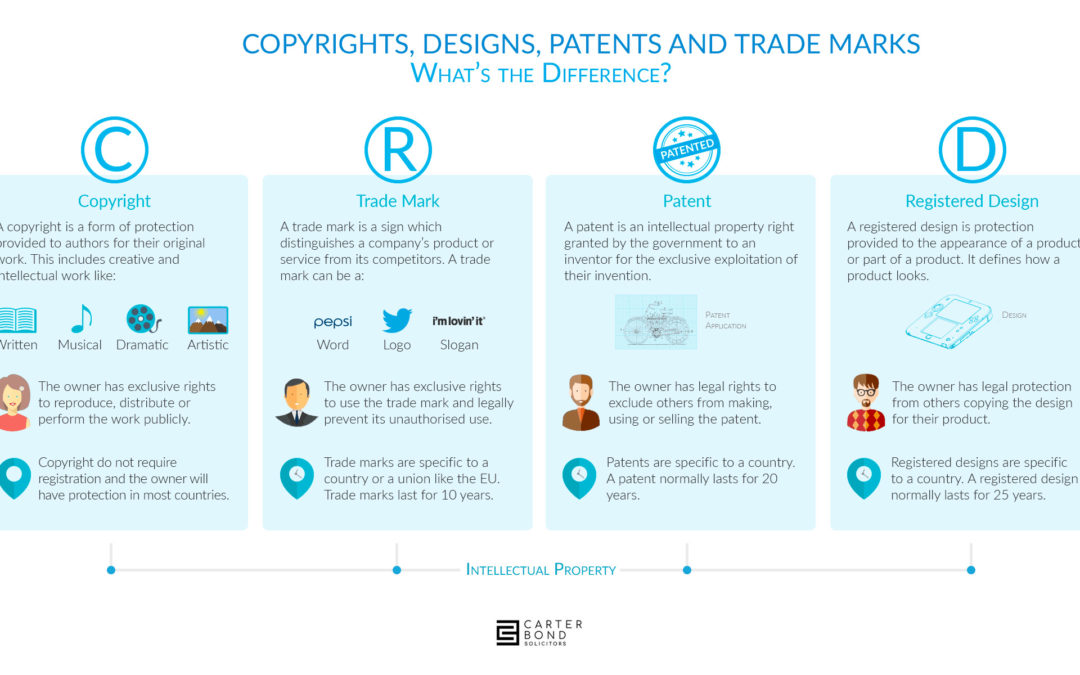Intellectual Property (“IP”) is essentially a person’s creative work that should be and needs to be protected so that, without your consent, no one else can financially benefit or gain recognition for your work. There are four main types of IP which are listed as follows:
- Copyright – protection is automatically granted to the author for their original, creative or intellectual work. For example, a novel is protected as an original literary work; a piece of music as an original musical work. It is generally neither necessary nor possible to register your copyright (the United States being an important exception).
- Trade mark – This is a brand element which distinguishes your goods and services from those of your competitors and other traders. The brand element could be a word mark, a logo mark or a slogan. However, it is possible to register and so protect a whole range of brand features such as shapes, colours, sounds, gestures, animation, holograms, and even store layouts.
- Patent – this concerns obtaining protection for new inventions.
- Registered designs – it is possible to register and so protect the visual appearance of a product or part of a product. But, as with trade marks, the scope of designs which can be protected is extremely wide-ranging and so includes not just the appearance of a product such as a toaster but extends also to include design features such as shape, configuration and decoration.
View the infographic below to see the difference between the four types of intellectual property.


